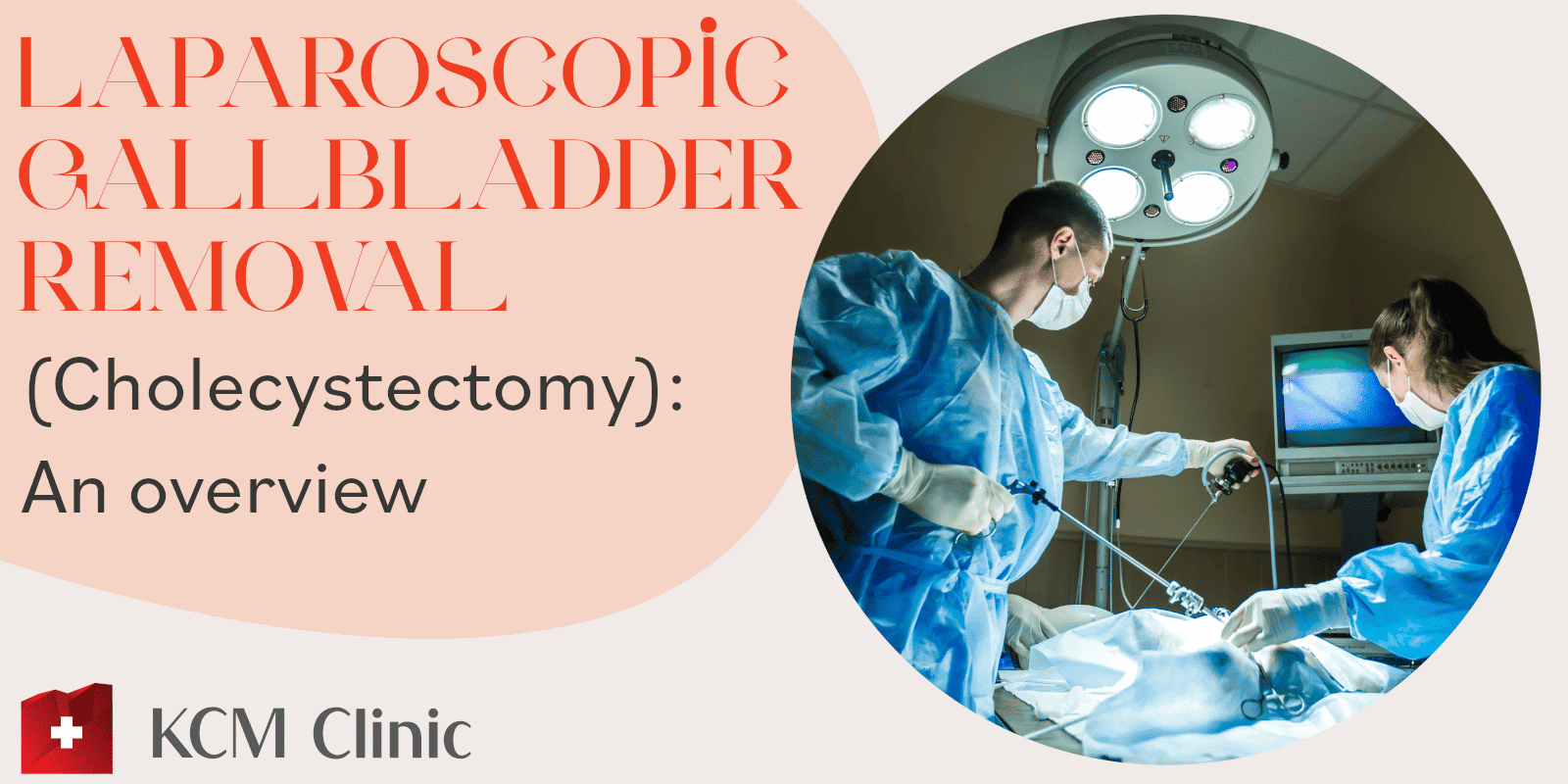Laparoscopic gallbladder removal, or cholecystectomy, is one of the most common surgical procedures. This surgery is performed laparoscopically under general anaesthesia and carries only a small risk of complications.
The gallbladder is a pear-shaped organ located in the upper right side of your abdomen, below your liver. It collects and stores a digestive fluid produced by your liver called bile. When gallstones are found in the gallbladder (cholelithiasis) and cause complications, the gallbladder may need to be removed.
In this article, we are going to describe the laparoscopic gallbladder removal procedure, why it is performed and what you can expect after surgery.
Why is laparoscopic gallbladder removal performed?
When substances in the bile become solid, they form gallstones inside the gallbladder. Gallstones can cause complications. For this reason, the gallbladder may need to be removed. Laparoscopic surgery is generally preferred as it’s less invasive than open surgery.
Laparoscopic gallbladder removal might be performed if you have:
- Gallstones in the gallbladder (cholelithiasis)
- Gallstones moving to the bile duct potentially causing a blockage (choledocholithiasis)
- Inflammation of the gallbladder (cholecystitis)
- Large gallbladder polyps
- Inflammation of the pancreas (pancreatitis) related to gallstones
- Biliary dyskinesia, or when the gallbladder doesn’t empty bile correctly due to a defect
How do you prepare for a laparoscopic gallbladder removal?
If you get in touch with us, we will give you all the pre- and post-op guidelines and information you need. Generally speaking, this is what you can expect before a laparoscopic gallbladder removal.
Tests
Your doctor will review your medical history and prescribe a few tests to assess your overall health and see if you are fit to undergo the procedure. Always inform your doctor if you’re taking any medications regularly or if you have any medical conditions we should be aware of. This is very important for us to know as we might ask you to stop taking certain medications.
Tests for a laparoscopic gallbladder removal include blood tests, imaging tests of your gallbladder, and a complete physical.
Food and drink
On the day of your laparoscopic gallbladder removal, you should be on an empty stomach. You should stop eating 8 hours and drinking 6 hours before the procedure.
Clothing and personal items
Make sure you wear comfortable clothing and nothing that needs to be pulled over your head. Remove all your jewellery before the surgery.
How does a laparoscopic gallbladder removal work?
The first step of a laparoscopic gallbladder removal involves administering general anaesthesia: you will be under a painless sleep through the procedure.
During a laparoscopic gallbladder removal, the surgeon starts the procedure by making a few small incisions in your abdomen. These incisions will be the access points for the surgical instruments, including a tiny camera that will allow the surgeon to have a clear overview of the area to be treated. Carbon dioxide will be pumped into your abdominal cavity for better access and view.
Then, the surgeon removes the gallbladder. X-rays or ultrasound may be performed to see if there are gallstones or other problems in your bile duct. The surgeon will finally remove the gas, close the incisions and finish surgery.
A laparoscopic gallbladder removal typically takes one to two hours.
Right after the procedure, you may feel some discomfort. You will be given pain medication to ease your recovery. You will be encouraged to walk right after the procedure. Depending on what you do, you should be able to go back to work in a matter of days after the procedure. Strenuous activity should be avoided in the first few weeks, as well as lifting heavy weights. You will receive a detailed diet plan to follow that will include very little fat and no hot spices.
What can you expect after a laparoscopic gallbladder removal?
Just like any other surgery, a cholecystectomy carries a few risks and side effects that you should be aware of.
Risks and side effects
A laparoscopic gallbladder removal carries a few complications including bleeding, infection, injuries to the bile duct, the liver or the small intestine, or a bile leak. General anaesthesia may also cause blood clots, pneumonia, or allergic reactions.
These risks depend on your general health and why you are undergoing a laparoscopic gallbladder removal.
Results
Removing your gallbladder can relieve the pain and discomfort caused by gallstones. While conservative treatments such as diet changes can’t stop gallstones from coming back, a laparoscopic gallbladder removal will prevent this from happening in most cases.
Since the gallbladder isn’t essential to a healthy digestion, most patients will not have problems with digestion after their gallbladder is removed.
After the procedure, some people may experience diarrhoea, but it should resolve over time. If you experience changes in your bowel habits or long-lasting side effects from the procedure, make sure you inform your doctor right away.
Laparoscopic cholecystectomy vs open cholecystectomy
A laparoscopic cholecystectomy is usually the preferred course of action as it’s less invasive, with fewer complications and a quicker recovery time. It can happen, however, that the surgeon begins with a laparoscopic approach but deems necessary to make a larger incision. In this case, the surgeon makes a 15-centimetre incision below your ribs on the right side. Muscles and tissues are pulled back to access and remove your gallbladder.
While after a laparoscopic gallbladder removal patients are often able to leave our clinic the next day, you should expect to spend two or three nights at our clinic. Full recovery from an open cholecystectomy may take four to six weeks.
Send Request
Register
Visits, hospital procedures
Bariatric Surgery Center
Plastic Surgery Center
Spine Surgery Center
Dental Clinic
OMEGA Imaging Diagnostic Center
Work hours
KCM Clinic Wrocław
Chat KCM Clinic
Locations
KCM Clinic Jelenia Góra
KCM Clinic Wrocław
Parking








